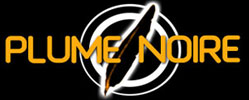
|
|
The kingdom of Denmark is now the cold Denmark Corporation based in NYC. Hamlet works on many different levels, notably Hamlet's quest for the truth as well as the theme of metropolis alienation and a world overpowered by media yet ultimately isolated. Some missing scenes may anger purists, but that doesn't make this modern meditation on urban solitude any less compelling. Ethan Hawke plays Hamlet as a James Dean brooder. He's as modern, moody, and sulky as we'd expect a wealthy, young New York filmmaker wearing an alpaca wool cap to be. The rest of the cast is quite strong as well. His mother Gertrude is played by the formidable Diane Venora (who was in Luhrmann's Romeo & Juliet), while Ophelia is played disarmingly well by Julia Stiles as young photographer who Hamlet urges on to a nunnery. Sam Shepherd, (who also played his father in the moving Snow Falling On Cedars) plays The Ghost here, while Kyle MacLachlan plays a mean, corporate Claudius. Finally, Polonius is played by restrained firecracker Bill Murray. Those familiar with the play will either be enthralled or utterly appalled-in either case the main scenes as well as dialogue remain. With Hamlet 2000's edgy artiness, Baz Luhrmann's Romeo & Juliet comes to mind. However, the two, apart from proffering a fresh take on Shakespeare do not have much in common. Luhrmann's film is ultra-rococco and dizzying. While enjoyable and stimulating, it is all overdrive and not reflective enough to pause for a moment. Ultimately, Almereyda's depth of layering wins over Leo and Claire. Saturation of media, color, and solitude prevail. Like a cloud of squid ink, everything floats in a heavy weight. The streets of New York are lit by the same bluish glow that permeates from TV screens. Loneliness in the city is exacerbated by this hypermodernity. The arty direction oozes blues, reds and yellows. New York could easily have been replaced by Hong Kong as an extreme city full of vices complicated by thousands of constantly flashing images. The media and arts invade this movie. Some sort of image is everywhere: from film and TV, to photography and paintings, as well as answering machines, cell phones, computers, wiretaps, security cameras. One should never feel alone with all of this art and stuff, yet loneliness bleeds through the screen. In Hamlet's apartment the works of art are framed and leaning against the wall on the floor while his wall is covered with cut outs from magazines and pictures, a computer table piled with cds and action figures. Hamlet is one of us, permanently surrounded yet unable to be articulate. Many scenes stand out although the "To be or not to be" speech in a Blockbuster video store is one of the best. As he walks down the "Action" aisle (how appropriate) with the Crow 2 playing on the TV monitor in the background, Hamlet asks what many do while walking down video aisles choosing from inane titles. This is pure modern sarcasm, where underneath it all some eagerness for honesty remains. Another hilarious scene is Hamlet inviting his parents to a screening of his film "The Mouse Trap". By mixing porn (i.e. Gertrude the slut) with cartoons and obvious metaphors he succeeds in mortifying Gertrude. The scene works on another level as well. Almeyreda mocks those gritty urban independent filmmakers whose films make the word "Indie" synonymous with pretentious crap rolled into a low budget cigar. Even Shakespeare's Hamlet can produce something that amounts to not much if given the chance. The technology or equipment to make films is available by many, but this does not necessarily signify better films, no matter WHO makes them. On the other hand, to be consistently documenting daily life, Hamlet, like Rocky Fitts in American Beauty, can sometimes create subtle moments. Hamlet breaks up with Ophelia by answering machine (Ah, modernity!) and searches for the Ghost by scanning security cams. Almeyreda doesn't shun all technology though. The famous graveyard skull scene is here, playing on a video camera screen as Hamlet ponders his next move from the confines of his bedroom. All of this can lead to a madness of the senses when human contact is lacking, and Ophelia's descent into madness amidst the Guggenheim spirals were a welcome architectural metaphor. You know it's 2000 when techno is featured, and here the music captures the cold rhythm of the city. Primal Scream, Nick Cave, and Morcheeba give Hamlet modern indecision without the calculating soundtrack cashcow. The choice of techno will firmly plant this Hamlet in an era where music can be both oddly cold and simultaneously velvety within the blink of an eye. The finale fencing duel atop a Manhattan skyscraper is highly original and the fragile but deadly blades lead to grand Shakespearian tragedy. More than just a 2000 update of a classic, Almeyreda proves more provoking than Jesus-Christ-could-he-be-more pretentious Branagh.
|
|

